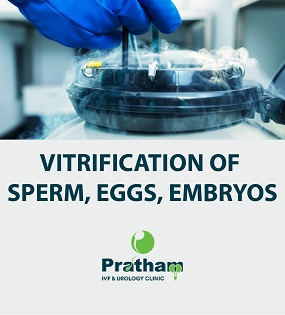
Pratham IVF And Urology
×
- Home
- about us
- services
In some individuals, spermatozoa may not be present in the ejaculate. This condition is called Azoospermia. This can be either due to problems in sperm production itself or due to obstruction to the flow of semen during ejaculation. Reproductive tract obstruction can be acquired – as a result of infection, trauma, an iatrogenic injury that can occur during bladder neck, pelvic, abdominal or inguinoscrotal surgery.
Congenital anomalies may be relatively uncommon in the general population but can occur in up to 2 percent of infertile men. The best-known condition is the congenital bilateral absence of the vas deferens (CBAVD) which occurs in almost all men with cystic fibrosis.
Two techniques – Epididymal sperm retrieval & micromanipulation have revolutionized the treatment of male infertility in the past decade. Men with congenital bilateral absence of the vas defenses (CBAVD) or reproductive tract obstruction are now able to achieve pregnancies with the use of these advanced techniques.
PESA
PESA or Percutaneous Epididymal Sperm Aspiration (PESA), does not require a surgical incision. A small needle is passed directly into the head of the epididymis through the scrotal skin and fluid is aspirated. The embryologist retrieves the sperm cells from the fluid and prepares them for ICSI.
MESA
Microsurgical Epididymal Sperm Aspiration (MESA) is used in conditions like obstructive azoospermia, involves dissection of the epididymis under the operating microscope and incision of a single tubule. Fluid spills from the Epididymal tubule and pools in the Epididymal bed. This pooled fluid is then aspirated. Because the epididymis is richly vascularized, this technique invariably leads to contamination by blood cells that may affect sperm fertilizing capacity in vitro.
TESA And TESE
TESE or testicular sperm extraction is a surgical biopsy of the testis whereas TESA or testicular sperm aspiration is performed by inserting a needle in the testis and aspirating fluid and tissue with negative pressure. The aspirated tissue is then processed in the embryology laboratory and the sperm cells extracted are used for ICSI.


